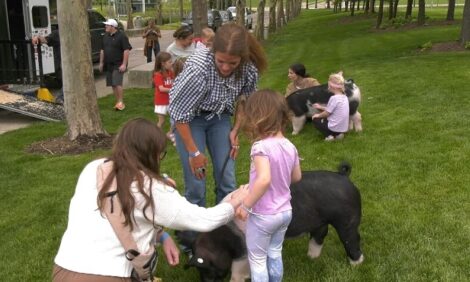



EU Compound Feed Production Up in 2015
EU - Compound feed production in the EU-28 in 2015 reached 157.3 million tonnes, which is 0.6 per cent more than in 2014, according to data provided by members of feed producers' organisation FEFAC.While cattle feed production dropped by 0.7 per cent, pig feed and poultry feed grew by respectively 0.6 per cent and 1.2 per cent.
Poultry feed therefore cemented its leading position in EU feed production, boosted by an increase per capita in meat consumption (+2.7 per cent), which primarily benefited poultry meat (+4 per cent).
Feed costs remained low and even decreased compared to 2014. This was due to a good 2015 cereals harvest in the EU, and a largely sufficient supply of oilseed meals globally, especially soybean meal.
Poland and Spain performed well, with annual growth close to 4 per cent. In contrast, Germany recorded a significant decrease (-2.9 per cent), whereas the UK was set back by more than 4 per cent, due to a decline in poultry feed production. All other major producers saw limited changes in production.
Forecast for 2016
FEFAC market experts are relatively pessimistic about industrial compound feed production in 2016. They do foresee the upward trend on poultry feed demand to persist, though at a slower pace than in 2015 (+0.5 per cent), but also a significant reduction in pig feed demand (-1.5 per cent), in line with expert forecasts on pigmeat production in the EU.
Overall, this would lead to a 0.7 per cent decrease in compound feed production in 2016 vs 2015.
On the feed materials side, concerns regarding the quality of the EU cereals harvest 2016 due to the humid and cold weather conditions in several EU Member States may result in higher supply of feed wheat. However, prudence will be required as regards the sanitary quality.
Concerning proteins, after the lower than expected South American soya harvest 2016 combined with a higher global demand for soybean meal, the attention is put on the US soya harvest forecast, which is relatively good for the time being.






